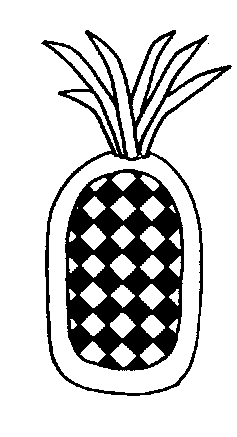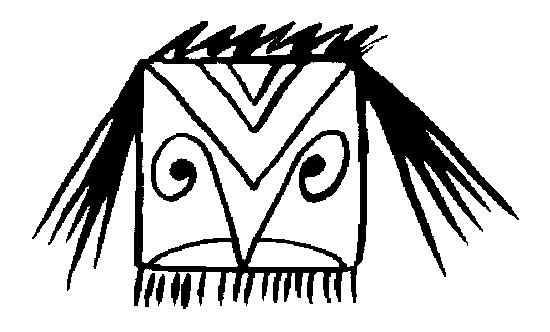"Children
have the right to an adequate standard of living"
Homes are buildings that
we live in with our families. They are very important places which should
provide love, warmth and security for everyone. Sometimes families are
of the nuclear type but they can also include the extended family of
grandparents, aunts, uncles, cousins and family friends.
This is particularly true in Uganda. Homes in the countryside are
more like homesteads than the individual buildings we tend to think
of as homes. There may be several buildings, grouped around a central
open area which is also used as a living space. The buildings may
be constructed from a wide variety of different materials. The main
buildings may be built of locally made bricks and may contain a living
room and some bedrooms. Another building, perhaps made from the woven
roots from trees and covered with mud cement and thatched, may be
a kitchen area. Yet another may contain another living area and another
a pantry or grain store.
Generally, these homes may house an extended family of perhaps three
generations, all farming the area around it. Other homes in the countryside,
just housing a single nuclear family, may be much smaller.
They are often of the 'mud hut' type in construction and the mud
cement is often decorated with murals both inside and out.
In the cities and towns, homes can also differ enormously. In what
used to be the more affluent areas, Ugandan Asians built houses that
looked like those of their European rulers. When the Asians were forced
to flee the country by Idi Amin, African families came to live in
the houses. They are usually bungalows with an attractive front room,
often with a verandah. There are usually several bedrooms, and a kitchen.
Because of the size of families, bedrooms normally cater for several
people. Kitchens often have electric ovens installed in them but very
few people can afford to run them. Instead, many families prefer to
use traditional charcoal burners which sit on the floor and look very
much like the trangia type stoves many people take camping with them
in this country.
In the suburbs of the big towns and cities there are many purpose
built houses for families on low incomes. These tend to be two room
apartments, built either in small blocks of flats or on one level
around a central meeting place. Families share the cooking and washing
facilities.
The next few activities help Beaver Scouts to look at their homes
and families. It is important to remember to be sensitive and not
make assumptions when dealing with these issues with Beaver Scouts.
Ask the Beaver Scouts to
draw a picture of their home and who lives there. In small groups get
them to talk about their different homes. If they have their own bedroom,
what do they keep there? What do they like best about their home?
Invite a Beaver Scout to mime an activity that takes place at home for
instance washing dishes, hoovering, cleaning the car, sweeping the floor,
cutting the grass, hanging out the washing, setting the table and so
on.
Can the other Beaver Scouts guess what the activity
is? Whose job is this at home?
Beaver Scouts can use shoe boxes to make United Kingdom houses. Then
try making Ugandan houses by weaving walls of twig/ raffia together
and covering them with clay.
Get each Beaver Scout to make a mud but using a strip of card made
into a short cylinder with a rectangle cut out for the door and with
a wide cone shape for roof. These can be coloured or painted, you
could use straw, wool, raffia or paper strips which can be stuck on
the roof to represent thatch.
Make a Ugandan village. Each Cub Scout can make a model of a mud but
using mud for the circular walls and grasses and so on for the thatched
roof. Around the outside of the village the Cub Scouts could make a
fence of mud walls.
You will need a wide cardboard tube, a piece of thin card, thin
garden canes, a junior hacksaw, straw or raffia, glue and scissors.
Cut a length of tube about 5cm (tin) long. Cut out a small piece
for the door. You will also need two circles, one about 7cm (3in)
diameter and the other about 12cm (sin) diameter.
|

|
Glue the piece of tube to the larger circle. |

|
Cut lengths
of cane and glue to the outside of the tube. |

|
Make a
cut in the small circle of card and fold to a cone shape to
fit the house. Glue into position. |

|
Glue lengths
of straw or raffia on to the cone to make the roof. Fit the
roof on to the house. |
A simpler method
using thin card - download
the template
The Beaver Scouts
should think carefully about what different things they have in their
bedrooms. They could then compare them with what they imagine a Ugandan
child's bedroom to contain
|

|
Using a cottage cheese or margarine carton. Cut an uneven number
of strips one inch wide in the carton. Take care as these sometimes
have sharp edges. Do not cut through the rim. Weave thick wool
or raffia through the strips - a safety pin on the end of the
wool will help with the weaving. Mats could also be made by weaving
using circles of card or paper plates.
Bowls can
be made by using plasticine and rolling out long thin strips
which can then be coiled from the centre, this is similar to
coiled basketry. |
|
The tribal
system still exists in some village areas and the tribes have
their own customs. The drum is important in Ugandan culture and
it is used for various traditional dances, ceremonies and communication.
Masks too are used for special ceremonies and dances. Make tribal
masks by cutting out a piece of card large enough to cover the
Beaver Scouts' face. Download a mask to
colour in. Cut out holes for the eyes, nose and mouth and also
so you can attach elastic or string to go round the head. Decorate
the card with paint, string, wool, raffia, silver paper, bottle
top coloured foil and feathers and so on. |


|
Draw circles on
the floor to represent huts, one less than the number of Beaver Scouts.
Beaver Scouts do a dance round the hall. When the whistle blows they
have to get into a but - the whistle could be a storm approaching or
a wild animal. Anyone not in a but loses a life and has to sit in a
but while the others dance round. The number of huts available decreases
by one each time. Alternatively the Beaver Scouts could be chased by
a wild animal and a few (huts) circles could be 'safe' areas. The huts
are only large enough for three people and the Beaver Scouts can only
stay there for 10 seconds (count to 10).
|


